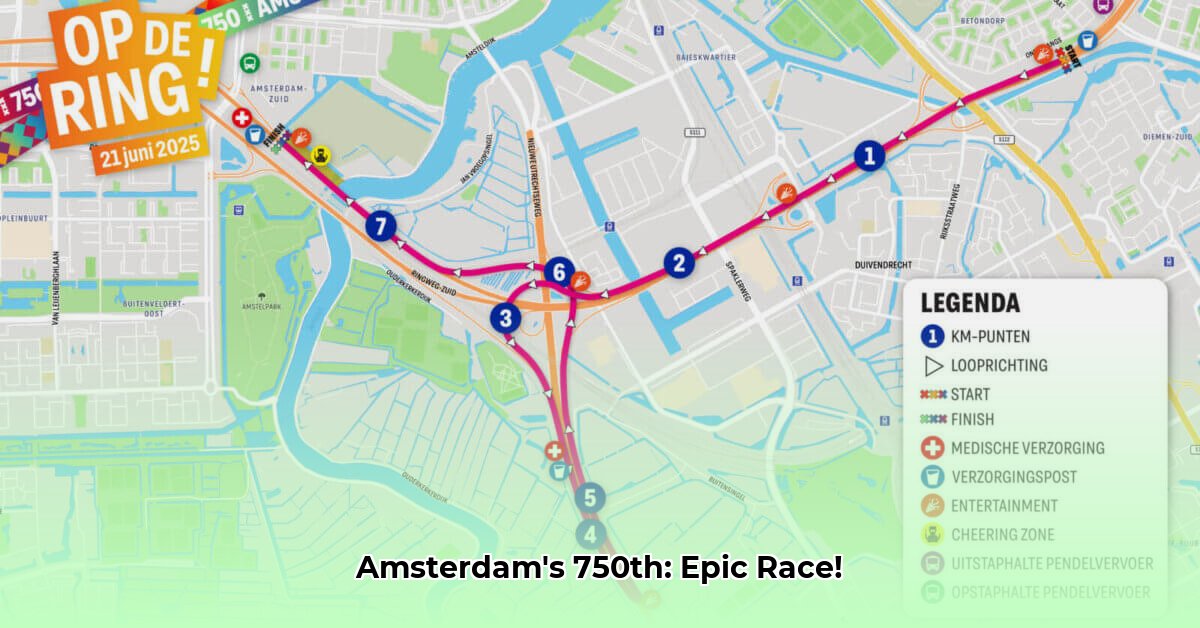
Run Op De Ring: Amsterdam's 750th Anniversary Race – A Success Story with a Few Twists
Amsterdam celebrated its 750th anniversary with Run Op De Ring, a planned 7.5km race around the A10 ring road. While initially envisioned as a celebratory event for runners of all levels, unforeseen challenges, particularly extreme heat, necessitated course adjustments and highlighted the importance of robust contingency planning. Despite these hurdles, the event largely succeeded in bringing together thousands of participants and fostering a festive atmosphere. This report analyzes the event's successes and shortcomings, offering recommendations for future improvements.
The Heat Wave: A Course Correction
Scorching temperatures forced a last-minute reduction of the race route from 7.5km to 3.75km. This decision, while necessary for participant safety, sparked concerns about communication. Did all participants receive timely and adequate notification of the change? A more robust, multi-channel communication strategy, potentially incorporating SMS alerts, email updates and social media announcements, is vital for future events to ensure transparency and minimise participant frustration. For example, future events could utilise a tiered communication system, prioritising urgent information via SMS, followed by supplementary details via email or social media.
Logistics: Navigating the City's Arteries
Closing a major motorway for a running race presented significant logistical challenges. Did the traffic management plan effectively mitigate disruptions to the city? Were businesses along the route adequately informed and supported? While partnerships with Le Champion (event organisers), Elevation Group (sponsors), and Ayvens (mobility) provided expertise, a more detailed, pre-event risk assessment, considering potential traffic flow bottlenecks and impact on city residents and businesses, is essential for future planning. This should include clearly defined alternative routes and traffic management strategies for various scenarios.
Runner Feedback: A Voice for Improvement
Gathering participant feedback is crucial for continuous improvement. A post-race survey should ascertain participant satisfaction with the shortened course, the clarity of communication channels, and the overall event experience. This data will inform future planning decisions and improve participant experience. For instance, qualitative feedback on the heat and route changes would provide valuable insight into the effectiveness of the safety measures implemented.
Lessons Learned and Recommendations for Future Races
Future iterations of Run Op De Ring should focus on several key areas:
Comprehensive Weather Contingency Planning: Develop multiple race routes to accommodate varying weather conditions, ensuring participant safety regardless of unforeseen circumstances. This might include a "heat protocol" with pre-defined thresholds for course adjustments and communication actions.
Multi-Channel Communication Strategy: Employ a multi-layered communication approach utilising diverse channels (SMS, email, social media) to guarantee prompt and clear dissemination of information to all participants.
Enhanced Traffic Management Strategy: Develop a detailed traffic management plan in consultation with Amsterdam city authorities, including clearly marked alternative routes, real-time traffic monitoring and communication systems. This strategy should also consider the potential impact on businesses and residents in the affected areas.
Post-Event Review and Evaluation: Establish a formal post-event review process incorporating participant feedback, a review of the traffic and safety management systems, and analysis of the communication strategies.
A Successful Event, Despite Setbacks
Run Op De Ring demonstrated the potential of a unique running event in Amsterdam. Despite unforeseen challenges, the event showcased the city's ability to host large-scale activities. By addressing the identified shortcomings, future events can build on the positive elements of this inaugural race, creating a more robust and enjoyable experience for participants and the wider community. The strong partnerships established provide a solid foundation for future success.